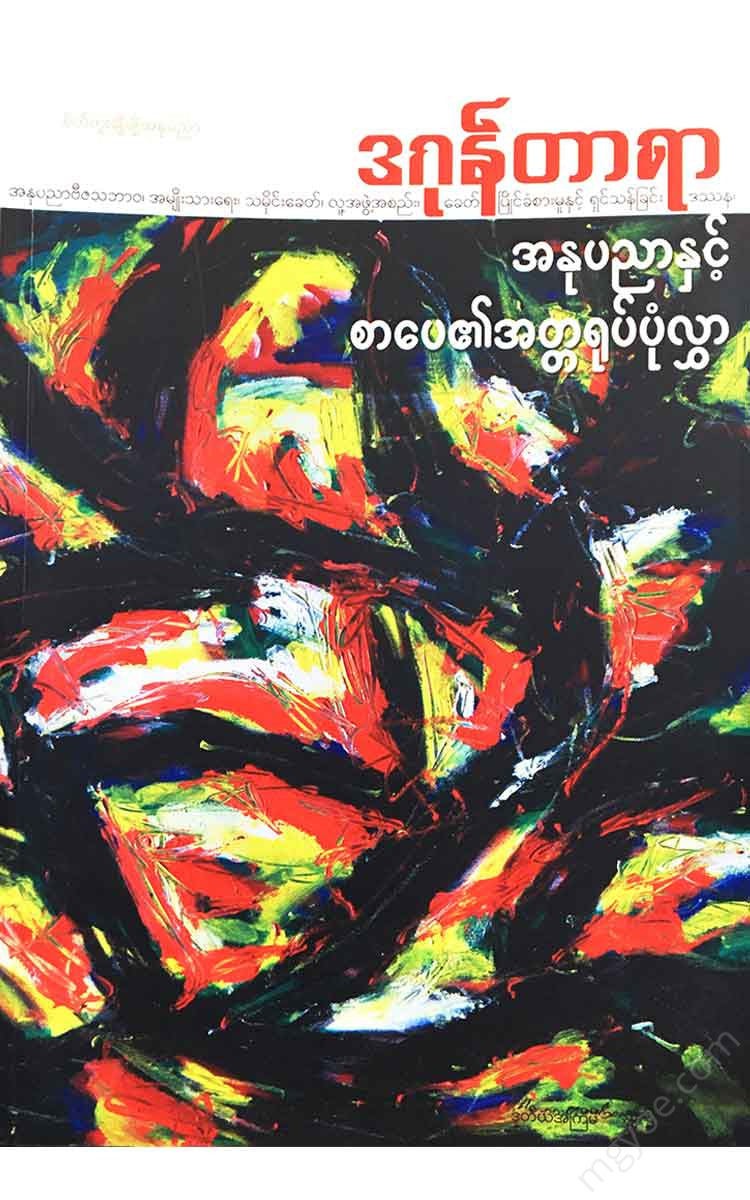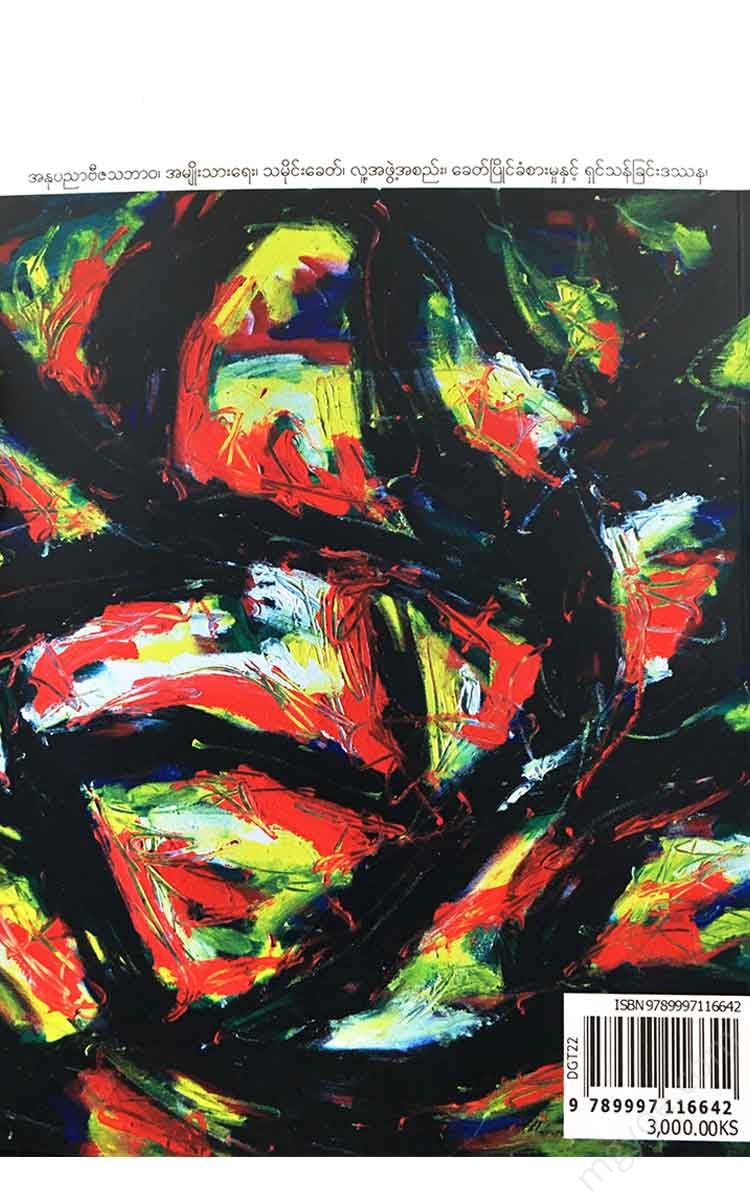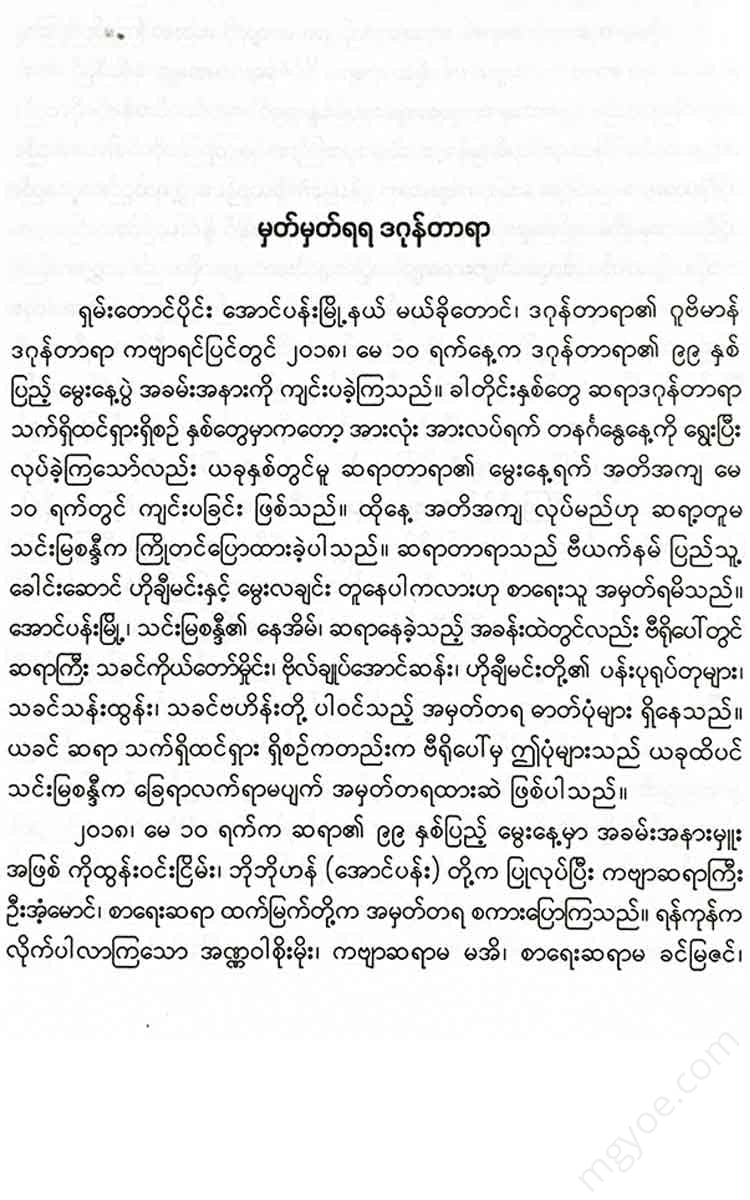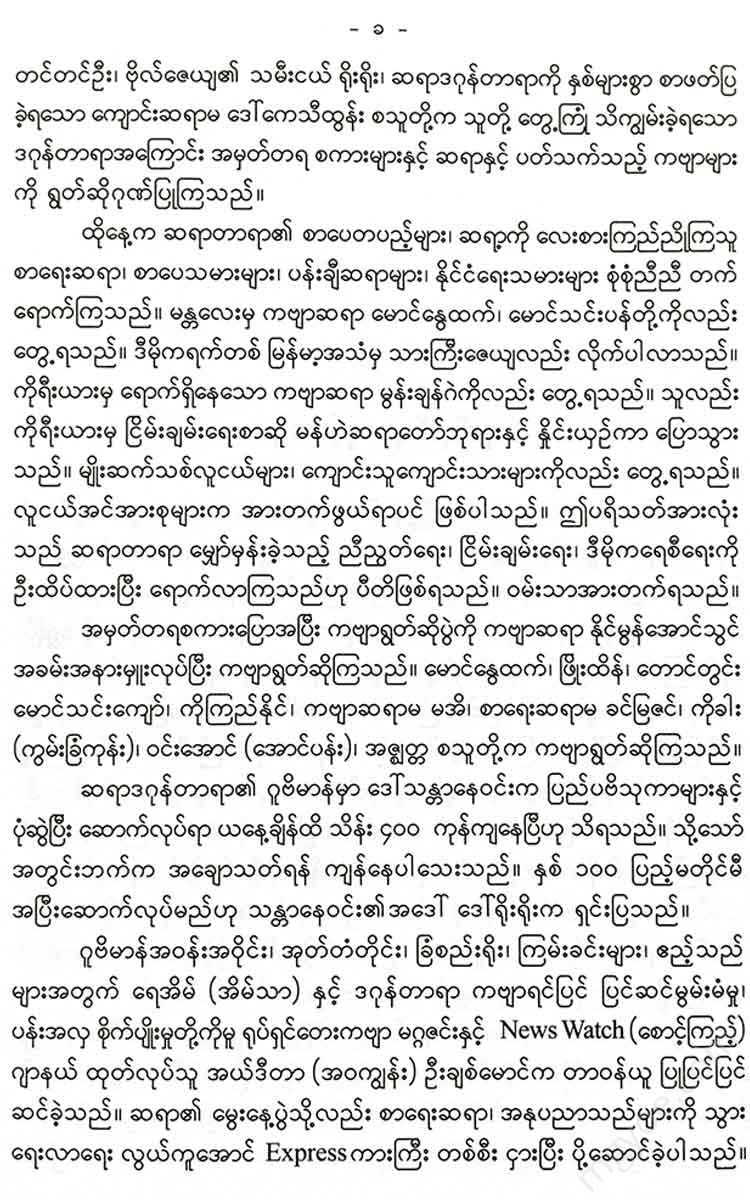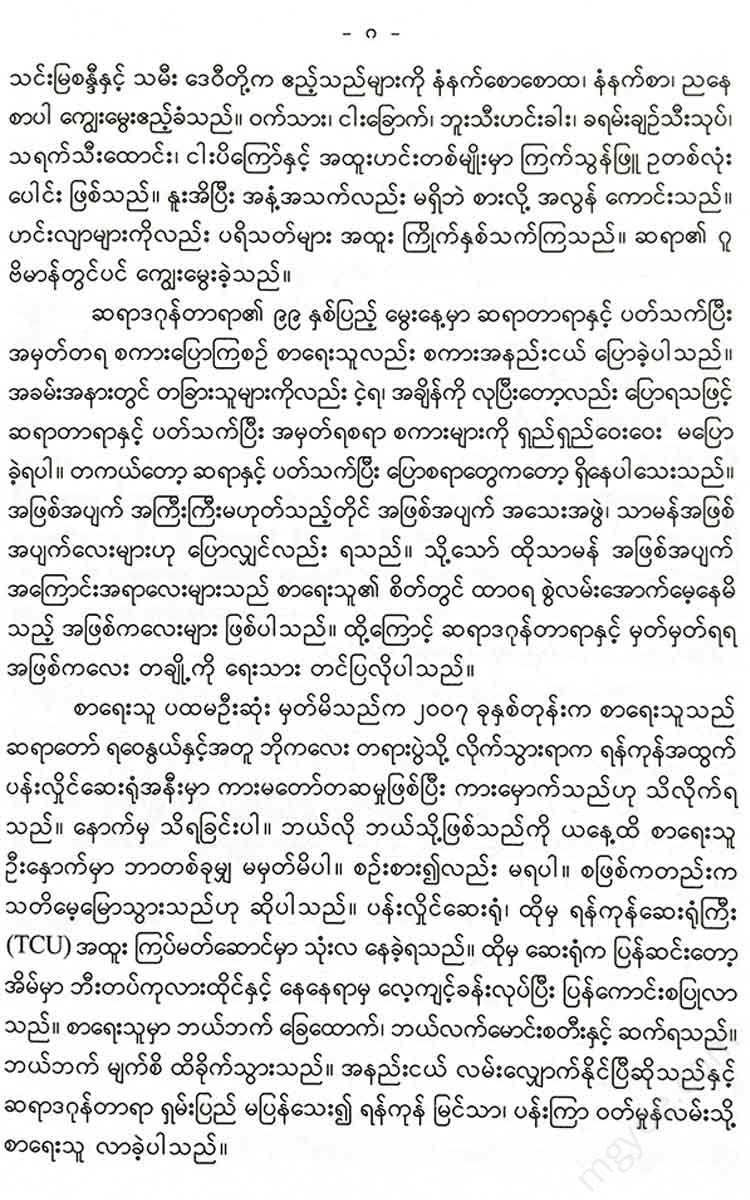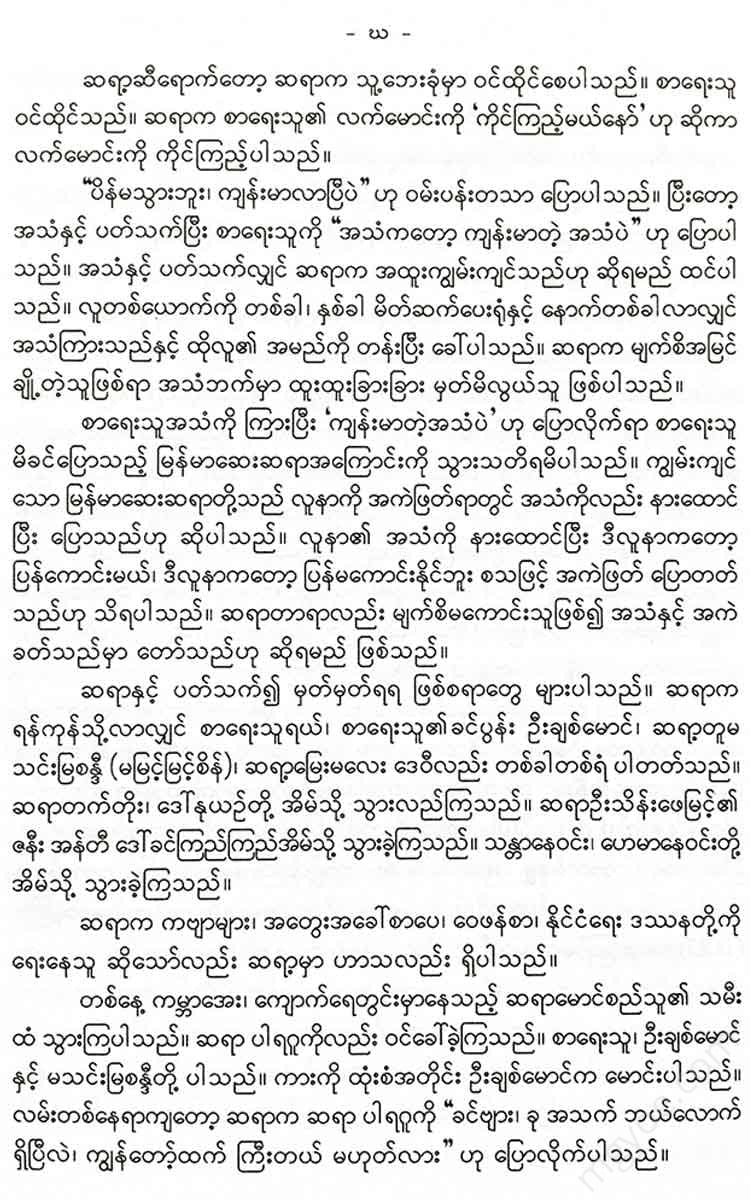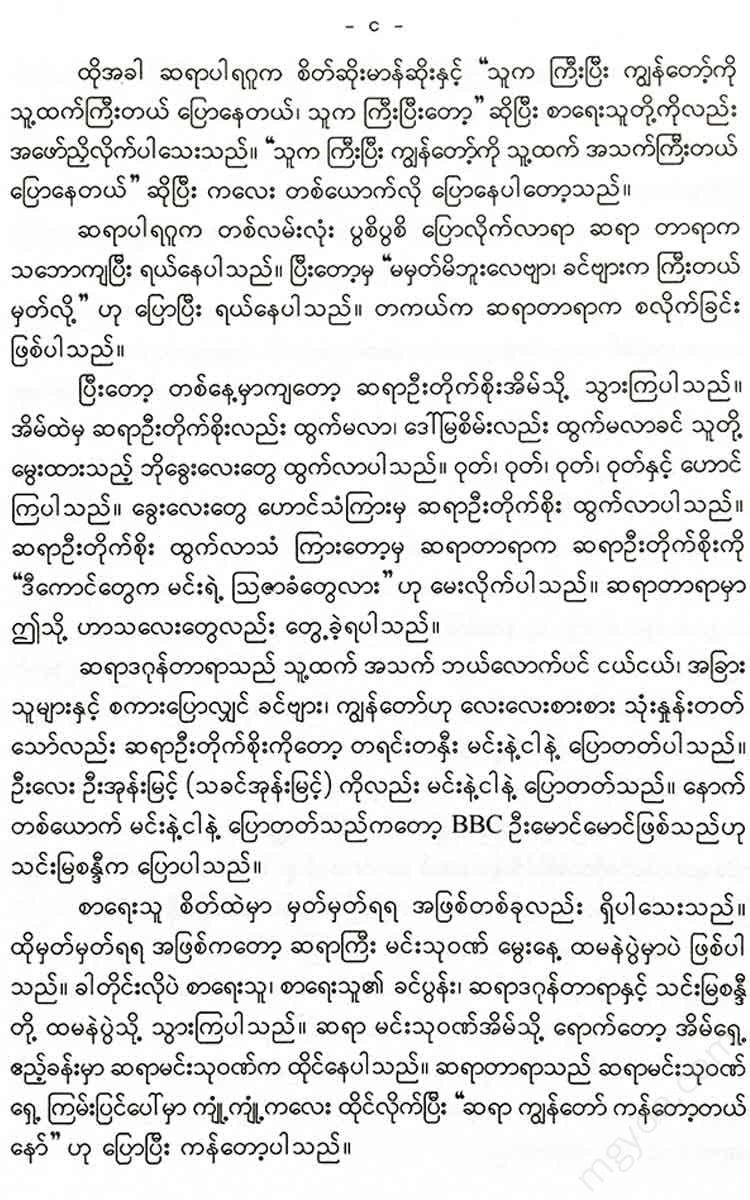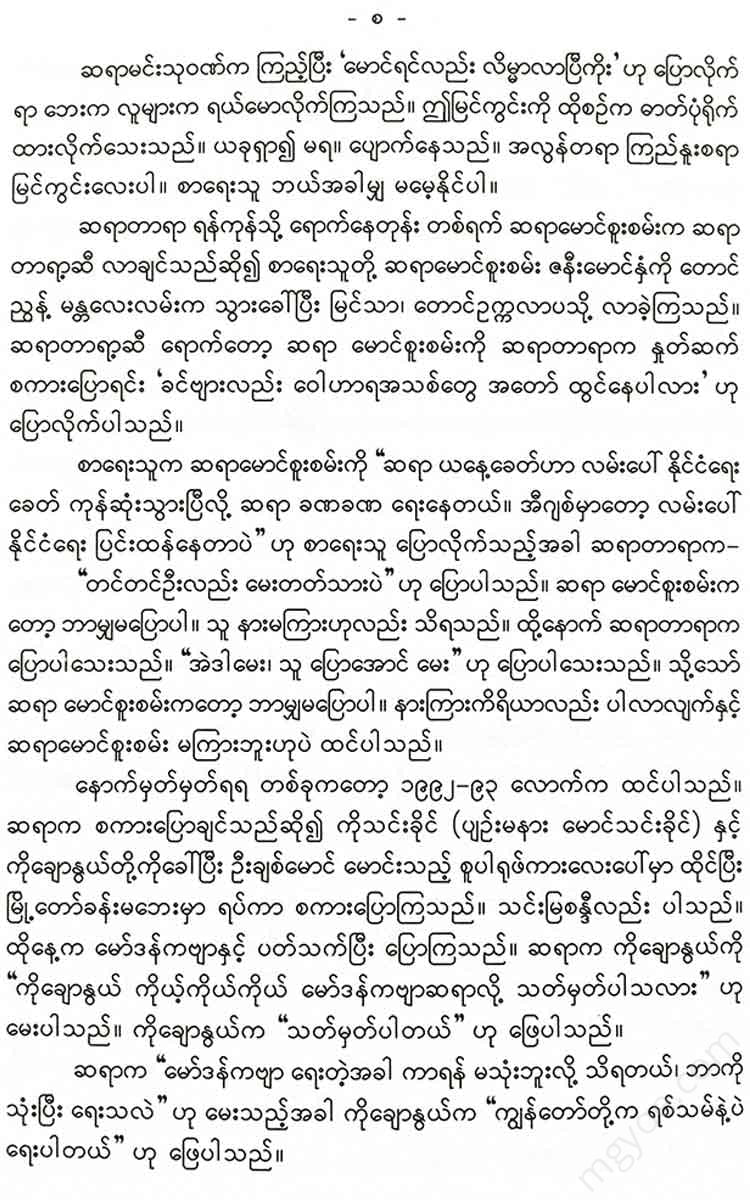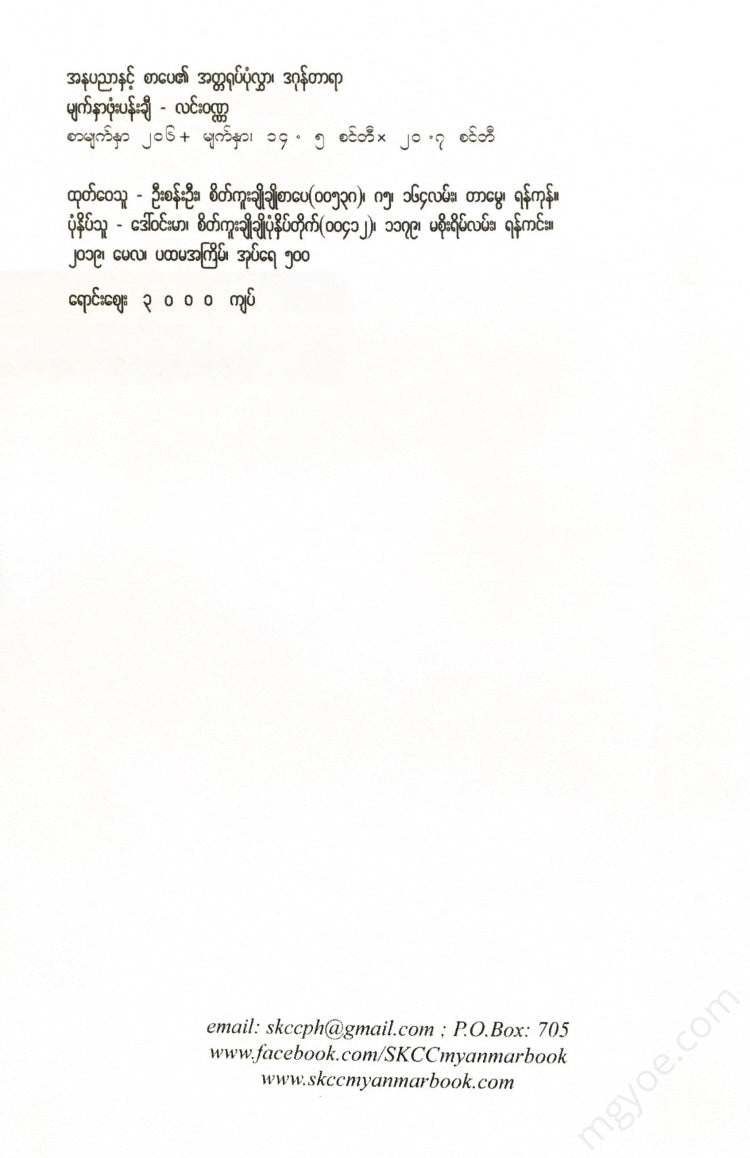စိတ်ကူးချိုချိုစာပေ
Dagon Tara - A Portrait of the Self in Art and Literature
Dagon Tara - A Portrait of the Self in Art and Literature
Couldn't load pickup availability
The teacher asked, "How do you make rhythm? What I want to know is how do you make rhythm?"
Then Ko Thin Khaing said, “This is how it is…” and explained, “If the word ‘kansunpin’ is ‘sho’ in the water, ‘k’ is ‘khayanthu’ in the ’sho’, the sound goes up in the ’sho’, and the sound goes down in the ‘khayanthu’ in the ‘sho’ in the ‘sho’.”
The teacher said, “Yes, it has rhymes, I want to know how to create rhythm without rhymes.” Then Ko Thin Khaing said, “Our modern poetry has no frame, teacher.” Then Teacher Tara said, “
"Show me something that has no boundaries in this world, Ko Thin Khaing," he said.
The author remembers this fact vividly. There was nothing to record at that time. However, he said that not only the author but Thin Mya Sandi also remembers it. U Chit Maung thinks that this poem must have been recorded. Ko Chaw Nwe does not. Ko Thin Khaing is still in good health at Pyinmana today.
Teacher Tara explained Socrates' question-and-answer style and modern poetry. The author has not forgotten it to this day.
There is also one special memory about the teacher.
Sayar Tara gave the author an inheritance. I think it was on Sayar Tara's 80th birthday. When we arrived at Aung Pan, the author was sick. Since it was May, there was no warm clothes. Ma Myint Myint Sein (Thin Mya Sandi) gave the author medicine and said, "
“Uncle, Tin Tin Oo is sick,” the teacher said, and he handed her his coat. He gave her the big warm coat, a red and white striped one, that Teacher Tara often wore. The author attended the birthday party wearing Teacher’s big warm coat.
The shirt stayed with the author until he returned home after his birthday. He has not given it back to this day. Ma Myint Myint Sein has not asked for it back. She did not ask for it back when the teacher was there either. The author has washed and ironed the shirt and still keeps it in the closet to this day. I still keep it as a memory that the teacher gave me.
The author first learned the name Dagontara when he was 13 years old. When he first entered the literary world, his mother was the only woman in the house. The rest were his father, his uncle, his mother's uncle, and all their friends were boys. They read. The author took the books they read and read them.
While reading this, one day the author read a book of poems called “Letyi Thit Pyin Hte” that was compiled by university students at that time. The book began with the first verse of the great monk’s wedding poem, “Ang Mingalar Saung Lek Choy”. Maung Lin Yoon (Shan State), Kyi Aye, Dagon Tara, Thein Than Htun, Inlay Thandar Khin, etc. were included. Kyi Aye’s poem “Wait and Call Me, Maung” is very good.
In that book, I read a poem called "The White Swan Lake" by Dagon Tara. This poem is probably one of the master pieces of the teacher. However, since I was a child, I was hooked on the poem and I can remember some of the lines by heart.
# Ruby juice, nausea and vomiting
Even though it's red, my whole body is red.
The most beautiful creature, like a beautiful bird
To the white swan, like a swan
Change again, above the lake water
He disappeared.
# Oh.. I don't forget
The day's colors, the changing vapors.
Lost love, passion, and
Only the prince remained.
I think some poems are more emotionally felt than just being read aloud. I felt it when I read that poem. It was written to make me feel that love was strong at night and that the lover had changed from a human to a white swan and disappeared from his embrace. It was the first poem of Dagon Tara that the author experienced as a child.
Then, the poems "March Revolution", "Maya", "Snow Melting", which can be called philosophical poems, "Dinosaur and Butterfly", and "Arise, Arise, Ayeyarwady" are poems that should be recorded. Before I met these, the author first encountered the poem "White Swan Lake".
Recently, I have been looking for Dagon Thara in magazines. I have been looking for short stories from Sapae Oo's collection of short stories called Pwint Khasa, and I have been looking for short stories from Shumawa, such as "Tim Kho Myin Aung Aung Sien".
"We must not miss the time of the future" in Shuma Wa is a true historical classic. The teacher is a writer who does not follow the popular opinion in writing. He does not follow the public, but he will give the public what is good. He will guide them to what is right. This is the teacher's literary philosophy.
There was a very famous and artistic story about Rama, Dasagiri, and Sita Devi. Dasagiri was portrayed as a pitiful lovelorn woman, so songs were sung and plays were performed about her. There was even a song called Dasalo Nimhe that was popular. People liked it very much. The teacher wanted to correct this by using the words dharma and adhamma. I believe that this word was first used by Daguntara in this commentary.
Rama is the symbol of Dharma, Dasagiri is an atheist.
If you write about evil, the pen will bend and twist.
The teacher criticized. He did not follow the crowd, no matter how much people liked him, but rather pointed out the truth.
Then, Saya Tara said that the novels such as “We must reach our era” and “Kyo Pan Reshin, Suna Paranta” are not written in a way that makes the introduction, the beginning of the story, the climax, and then the end of the story interesting and enjoyable. He wrote it as he wanted to. Therefore, if you read it, you will get bored. However, he does describe the true background history of the story in a way that is understandable. That is why the author says that Saya is a writer who is not popular with the public.
In the era of the teachers, the real writers started their literature by laying a solid foundation from the very beginning. The foundation was strong because of the good beginning and the good foundation, and from there, it gradually built up and became a strong literary structure, a great literary body. Literature without a strong foundation and foundation would have disappeared and collapsed halfway through.
Another thing to remember is that when I was about to leave or return, I would not give my teacher a long life, a healthy life, or a happy life like others. He would give me a reward saying, “May the democratic uprising be successful.” Didn’t he want a free, united, and peaceful democratic country?
Therefore, among the writers, those who read Saya Dagon Tara's writings, stayed close to him, and followed his literary principles, it is not only important to be an artist in literature. It is the main task of literature to show what is right, to show that what is good is good, to show that what is bad is bad, and to show and guide people to feel and understand what is unfair and unjust. As a disciple of Saya Tara, I have to write that the main task of literature is to show and guide people to understand what is right and what is wrong.
Tin Tin Oo
